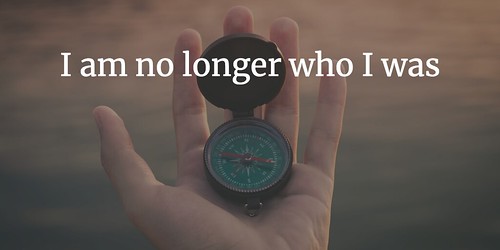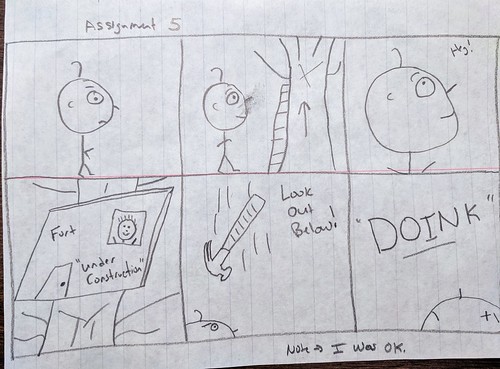When someone invites me in, I often jump. So it is with Ian, who is running a university course called Revolutionary Poets Society, and the name caught my attention when he began sharing it out via Twitter. I’m going to poke around, from out here in the open (Ian will have students in his classroom, I believe).
His first post is a call to create six word memoirs, which I have done more than a few times but always enjoy it (and my sixth graders are working on their own right now as part of a getting-to-know-you activity). Then, Ian asks folks to take it a step further by sharing it with others, and sparking conversations about the word choices and ideas. Maybe inspire others to write their own.
I decided to bring my new six (or seven) word memoir into a relatively new online space — Yap.Net (join in if you want — it’s a closed network for sharing works in progress, etc)– and ask folks for feedback.
First, my words:
I am no longer who I was
Actually, my original six were:
I’m no longer who I was
but the contraction seemed to be cheating, somehow, in my head when I read it to myself and so I broke it out. Which leaves me with seven instead of six.
What does it mean? I was going for the concept of each day brings a different you/me/us — with new experiences and insights — with echoes of the past but a step forward towards the future. Or something like that.
I shared my words out in Yap.Net and posed the technical question: Who or whom? (I wasn’t quite sure, because I thought Whom was technically correct with I as the subject, but it sounded terrible on my lips, while Who seemed wrong grammatically but sounded right on the tongue.)
Well, the grammar query sparked a conversation, with mixed signals, as one friend thought it was Whom but Who was better used, and another friend, self-described grammar queen, stated that Who is right, not Whom. Others jumped in with their own words, including one in the form of a poem and another that reads like a painting on a canvas, and the thread of discussion was neat.
Interestingly, I don’t think anyone called me out for the Seven versus Six.
I’m sticking with Who, by the way.
Peace (in the share),
Kevin










